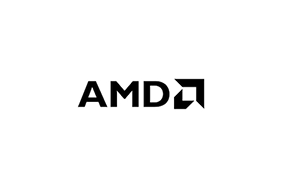AMD Awarded SEAL Sustainable Product Award
Published 12-16-22
Submitted by AMD

AMD has received a 2022 SEAL Sustainable Product Award for innovative and impactful products “purpose-built” for a sustainable future in data centers. The SEAL Business Sustainability Awards honor leadership, innovation and commitment to sustainable business practices. Judged by a panel of sustainability and environmental, social, and governance (ESG) experts, the award to AMD recognizes the company’s ambitious goal and progress to deliver a 30x increase in energy efficiency for AMD processors and accelerators powering servers for High Performance Computing (HPC) and Artificial Intelligence (AI)-training from 2020-2025.1
“AMD designs for energy efficient data center solutions and we are honored to receive this SEAL Sustainable Product award for our vision and achievements,” said Susan Moore, Corporate Vice President, Corporate Responsibility. “We embrace the role of advancing sustainable computing through leadership performance per watt and collaboration with our customers and partners.”
Accelerated computing technologies from the semiconductor industry such as HPC and AI-training are at the forefront of some of the most promising scientific advancements. Opportunities span climate predictions, alternative energy, genomics, drug discovery and other areas. But underlying computing technologies that may help unlock these advancements can be energy intensive, thereby potentially increasing greenhouse gas (GHG) emissions that contribute to climate change.
AMD embraces its role in addressing these critical priorities through its leadership CPU and GPU product portfolio. With a focus on accelerating server energy efficiency, lowering data center total cost of ownership (TCO) and delivering high-performance computing, AMD is helping to tackle some of the world’s most important challenges.
The AMD 30x25 energy efficiency goal represents a multi-lane product roadmap designed to increase performance and energy efficiency through optimizations of hardware and software used in HPC and AI-training. Accomplishing this goal will require AMD to increase the energy efficiency of a compute node at a rate that is more than 2.5x faster than the aggregate industry-wide improvement made during the prior five years from 2015-2020. This is very ambitious given that annual gains across the semiconductor industry for performance and efficiency have been slowing for a decade.
Nearly midway through 2022, AMD is on track toward achieving 30x25, having reached 6.8x improvement in energy efficiency from the 2020 baseline using an accelerated compute node powered by one 3rd Gen AMD EPYC™ CPU and four AMD Instinct™ MI250x GPUs.2 The company’s progress report utilizes a measurement methodology validated by renowned compute energy efficiency researcher and author, Dr. Jonathan Koomey.
For more information on AMD data center sustainability, please visit: https://www.amd.com/en/corporate-responsibility/data-center-sustainability
Footnotes:
1 Includes AMD high-performance CPU and GPU accelerators used for AI training and High-Performance Computing in a 4P hosted configuration. Goal calculations based on performance scores as measured by standard performance metrics (HPC: Linpack DGEMM kernel FLOPS with 4k matrix size. AI training: lower precision floating point math GEMM kernels such as FP16 or BF16 FLOPS operating on 4k matrices) divided by the rated power consumption of a representative accelerated compute node including the CPU host + memory and 4 GPU accelerators.
2 EPYC-030: Calculation includes 1) base case kWhr use projections in 2025 conducted with Koomey Analytics based on available research and data that includes segment-specific projected 2025 deployment volumes and data center power utilization effectiveness (PUE) including GPU HPC and machine learning (ML) installations, and 2) AMD CPU socket and GPU node power consumptions incorporating segment-specific utilization (active vs. idle) percentages and multiplied by PUE to determine actual total energy use for calculation of the performance per Watt. 6.79x = (base case HPC node kWhr use projection in 2025 x AMD 2022 perf/Watt improvement using DGEMM and typical energy consumption + Base case ML node kWhr use projection in 2025 *AMD 2022 perf/Watt improvement using ML math and typical energy consumption) /(2020 perf/Watt * Base case projected kWhr usage in 2025). For more information on the goal and methodology, visit https://www.amd.com/en/corporate-responsibility/data-center-sustainability

AMD
AMD
About AMD
For more than 50 years AMD has driven innovation in high-performance computing, graphics and visualization technologies. Billions of people, leading Fortune 500 businesses and cutting-edge scientific research institutions around the world rely on AMD technology daily to improve how they live, work and play. AMD employees are focused on building leadership high-performance and adaptive products that push the boundaries of what is possible. For more information about how AMD is enabling today and inspiring tomorrow, visit the AMD (NASDAQ: AMD) website, blog, LinkedIn and Twitter pages.
More from AMD

